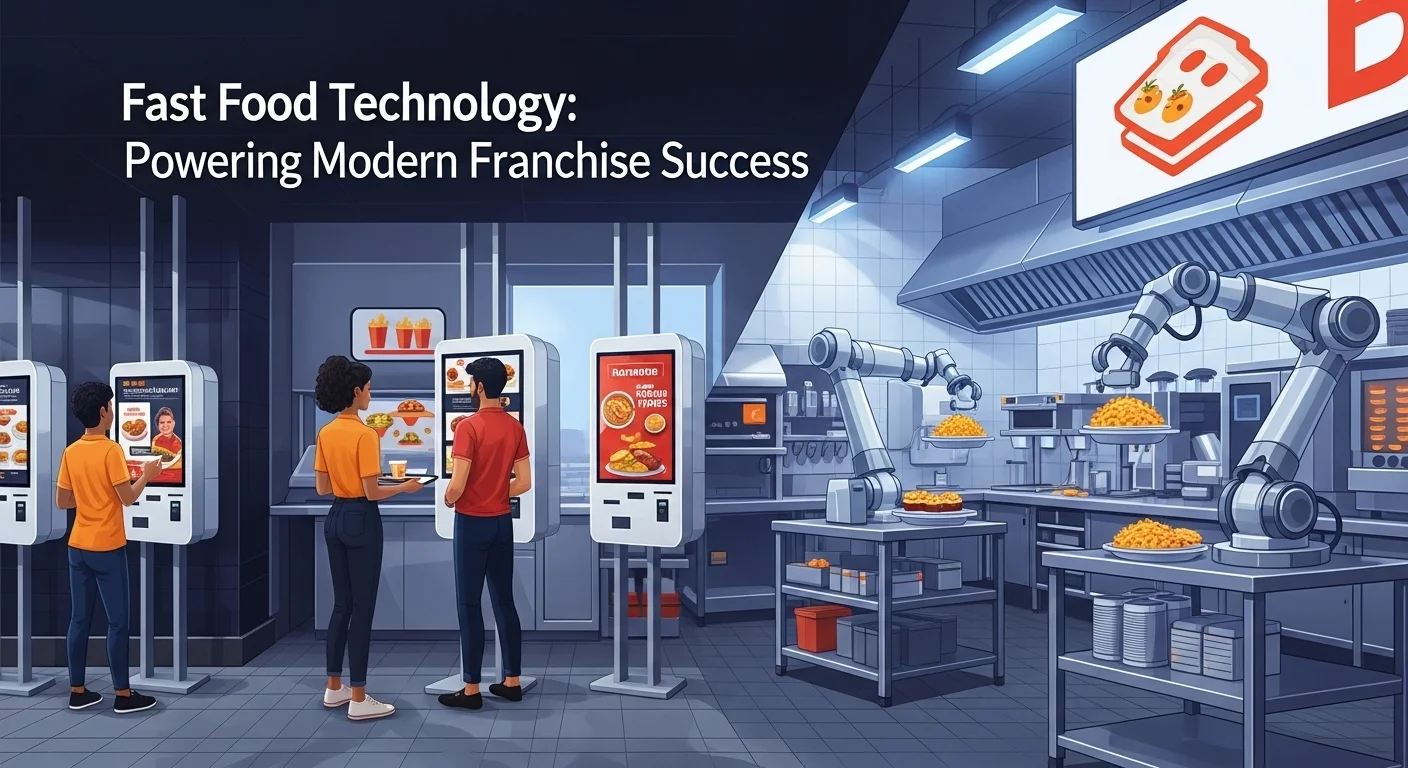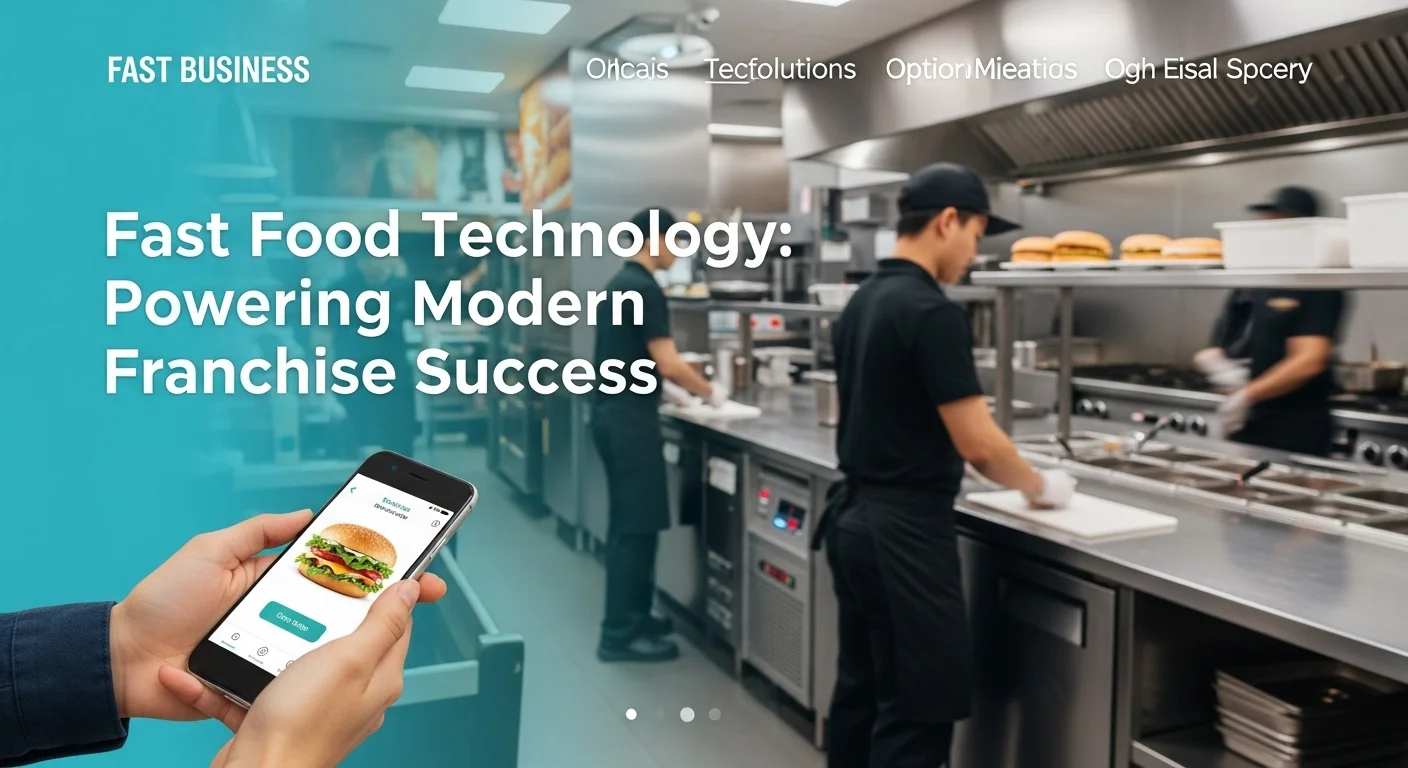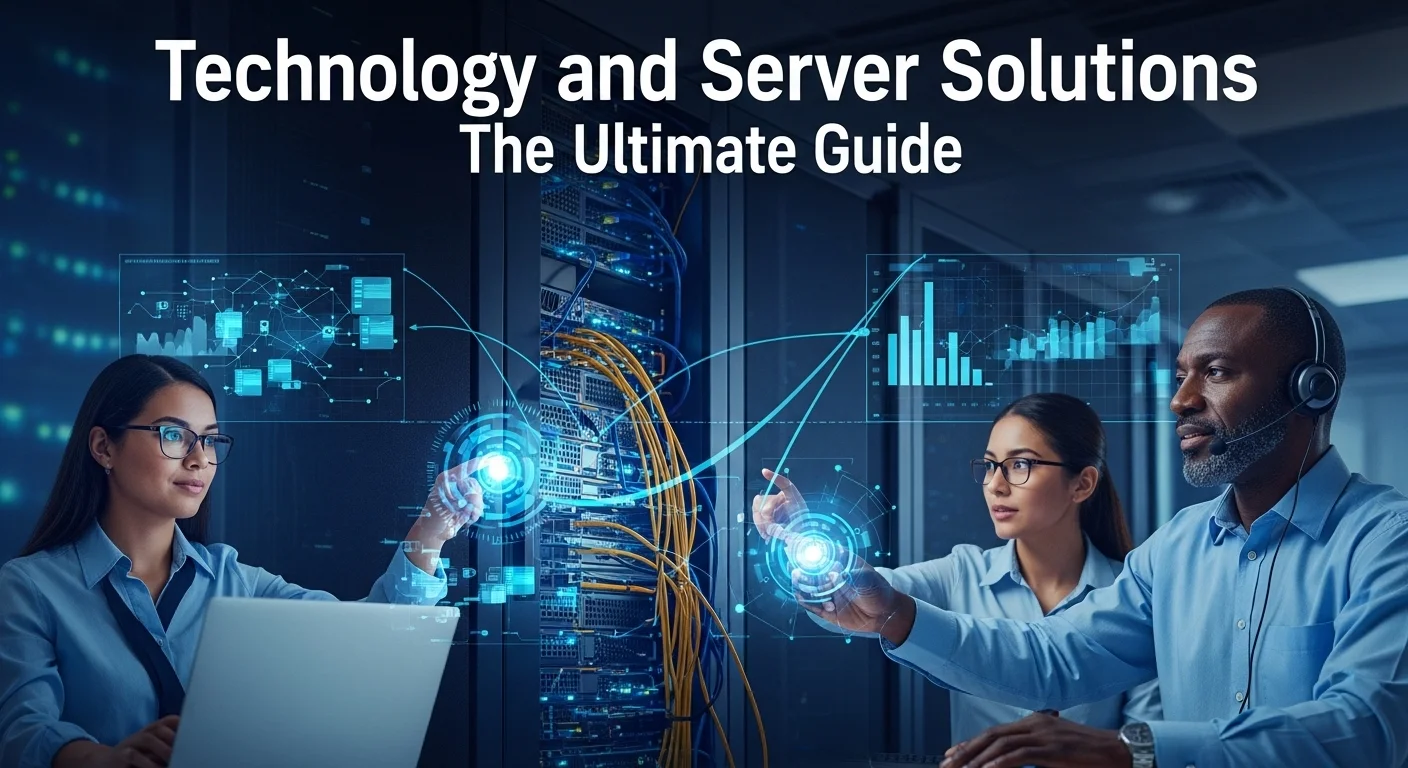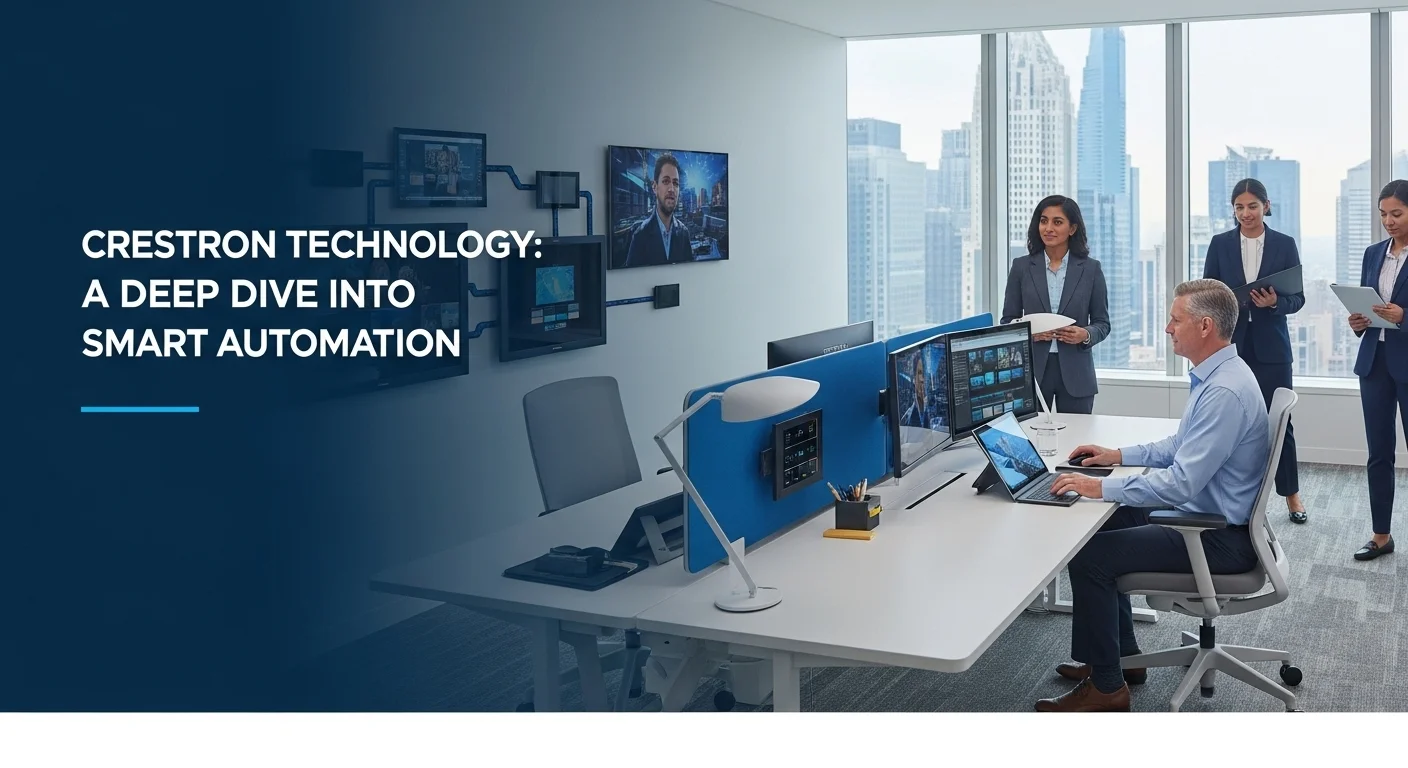The Secret Tech Sauce: How Innovation is Powering Today's Fast Food Franchises

Executive Summary
Over the last twenty years, I've watched the fast food industry transform in ways I never thought possible. It's no longer just about flipping burgers faster; it's about using cutting-edge technology to create a seamless, personalized, and incredibly efficient experience. Today, the success of a franchise hinges on its tech stack. Think AI-powered drive-thrus that rarely make a mistake, or cloud-based systems that let an owner manage five locations from their tablet. This shift means that the initial cost of a franchise now heavily involves investing in a powerful suite of digital tools. In this article, I'll walk you through the essential technologies—like AI, cloud computing, and cybersecurity—that are driving the modern Quick Service Restaurant (QSR). We'll explore how to leverage these tools to gain a competitive edge, turning a simple franchise opportunity into a profitable, future-proof business ready for the modern customer.
Table of Contents
The New Fast Food Recipe: A Dash of Data and a Heap of Tech
On This Page
When you think of fast food, you probably picture burgers and fries. But these days, you should be picturing data, artificial intelligence, and the cloud. The term 'fast food' has evolved into the Quick Service Restaurant (QSR) industry, a global giant that's become a playground for technological innovation. I've seen it firsthand—technology isn't just a fancy add-on anymore; it's the very engine that drives efficiency, delights customers, and fattens profit margins. For anyone looking to buy into this world, especially through a franchise, understanding this powerful partnership between food and tech is non-negotiable.
At its heart, the modern fast food experience is a digital one. Your customers expect to order on their phones, customize their meals at a kiosk, or talk to a flawless AI in the drive-thru. These tools aren't just for convenience. Every single tap and order creates a trail of data. This data is gold. It helps franchises personalize marketing, perfect their menus, and even predict Tuesday's lunch rush. We've moved past gut feelings; success now comes from data-backed decisions that fuel real growth.
The Tech Revolution in Quick Service Restaurants
The QSR industry's deep dive into technology is a direct response to fierce competition and sky-high customer expectations. A decade ago, it was all about being fast and cheap. Today, customers want all that, plus personalization, perfect accuracy, and a hassle-free experience. Technology is the only way to deliver it all.
- Point of Sale (POS) Systems: Forget old-school cash registers. Modern POS systems are the digital brain of the restaurant. They are cloud-based command centers that connect sales, inventory, customer loyalty, and even employee schedules on one platform. For a franchise owner with several stores, this is a game-changer. I've seen owners go from drowning in spreadsheets to managing their entire operation in real-time from an iPad.
- Mobile Ordering & Delivery: Our phones are our lifelines, and fast food chains know it. A slick mobile app with a good loyalty program isn't just a sales channel; it's a direct line to your customer. It builds habits and loyalty. On top of that, being plugged into delivery giants like DoorDash and Uber Eats is essential for reaching customers who want to stay home.
- Artificial Intelligence (AI) and Automation: This is where things get really exciting. AI voice assistants are now taking drive-thru orders with more accuracy than tired human cashiers, which means fewer mistakes and faster lines. I remember consulting for a franchise that was struggling with drive-thru times. We implemented an AI voice assistant, and within three months, their service speed increased by 20% and order accuracy went through the roof. Inside, robots are starting to handle repetitive tasks like frying, ensuring every batch of fries is perfectly golden.
- Internet of Things (IoT): IoT is about making your kitchen smart. Think refrigerators that text you if the temperature is off, ensuring food safety, or ovens that cook every item to perfection based on a pre-set program. This automation is key to delivering the same high-quality product across every single franchise location, which is what builds a brand's reputation.
Real-World Benefits for Franchise Owners
When you're looking at franchise opportunities, the franchisor's tech package should be one of your top considerations. A brand that has invested heavily in technology is a brand that's built for the future. The initial investment might be higher, but the long-term payoff is massive. When you're investigating a franchise for sale, you need to kick the digital tires.
Here’s what a great tech stack actually does for you:
- Runs a Tighter, More Profitable Ship: Automation in the kitchen and at the counter cuts down on labor, reduces costly errors, and gets customers served faster. Kitchen Display Systems (KDS) organize the chaos of a dinner rush, leading to lower operating costs and the ability to serve more people.
- Creates Happier, More Loyal Customers: Technology gives customers control. Kiosks let them customize orders without feeling rushed, and apps remember their favorites for one-tap reordering. When AI suggests a milkshake they might love, and they do, they feel understood. That good feeling is what brings them back again and again.
- Enables Smarter Decisions: The data you collect is a roadmap to success. By analyzing sales trends, you can figure out which menu items are true stars, when you need more staff on hand, and whether that two-for-one coupon actually worked. It removes the guesswork from running your business.
- Makes Growth and Scaling Possible: If you dream of owning more than one unit, technology is your best friend. A unified cloud system ensures every location runs on the same playbook—same menu, same prices, same promotions. It gives you the control you need to expand your empire while ensuring customers get the consistent experience they expect from a trusted brand.
In short, technology and fast food are now one and the same. For any entrepreneur or investor, the lesson is clear: a franchise's future success is written in its code. Sizing up a brand's tech isn't just smart; it's the most critical part of making a wise investment in the QSR world.

Your Tech Playbook: A Guide to Smart Franchise Solutions
So, you know technology is vital. But how do you navigate the maze of options? For anyone sizing up a fast food franchise opportunity, it’s about understanding the specific systems that separate a future-proof business from one that’s already falling behind. Let's break down the technical methods and business solutions that the most successful franchises use, giving you a blueprint for building a profitable and efficient operation.
Building Your Digital Foundation: The Core Tech Stack
A franchise's 'tech stack' is simply the collection of software and hardware that runs the show. When I consult with potential franchisees, the first thing I look at is how well these systems work together. A messy patchwork of tools can cause headaches, but a unified, integrated platform is the secret to a smooth, data-driven business.
1. The Point of Sale (POS): Your Restaurant's Brain
The POS is the heart of it all. The best systems, like Toast or Square for Restaurants, do so much more than take payments. They are comprehensive platforms that manage:
- Sales and Orders: Flawlessly tracking every order, whether it’s from the counter, a kiosk, your app, or a delivery partner.
- Inventory Control: Think of it as a system that automatically subtracts tomatoes and buns from your stock every time a burger is sold, then alerts you when you're running low. It's a huge money-saver that prevents waste.
- Customer Relationships (CRM): Building profiles of your loyal customers, tracking what they buy, and managing your rewards program so you can send them offers they'll actually want.
- Team Management: Tools for scheduling shifts, tracking hours, and integrating with payroll. It simplifies one of the most complex parts of running a restaurant.
When you're vetting a franchise, ask them about their POS. Is it a modern, cloud-based system? A brand that locks you into an old, clunky system is a major red flag.
2. Putting AI and Machine Learning to Work
Artificial Intelligence is no longer just a buzzword; it's a practical tool that's changing the game. Here's how:
- Conversational AI in the Drive-Thru: Companies like Presto and even Google are creating AI that can take complex orders in a noisy drive-thru, understand accents, and even upsell by suggesting a combo. For an owner, this means faster service, bigger orders, and less strain on your staff. Wendy's use of Google's AI is a perfect example of this in action.
- Predictive Analytics: This is my favorite part. AI can analyze past sales, the weather forecast, and even local events (like a big game) to predict how busy you'll be. This allows you to perfect your staff schedule and order just the right amount of food, drastically cutting down on waste, which is a huge drain on profits.
- Personalized Menus: Remember McDonald's buying that tech company, Dynamic Yield? That was all about personalization. Digital menu boards and apps can now show tailored suggestions to customers based on their past orders or the time of day, making them feel special and increasing the odds of a larger sale.
3. The Cloud: Your Key to Control and Scale
Cloud computing is the invisible backbone that makes all this possible. Instead of clunky, expensive servers in the back office, franchises use the cloud to run their software and store data securely. The advantages are huge:
- Centralized Command: From headquarters, a franchisor can update the menu or launch a new promotion across every single store in the country with one click.
- Manage from Anywhere: As a multi-unit owner, you can check real-time sales reports or even peek at live security cameras from your phone, whether you're at home or on vacation. It gives you freedom and control.
- Iron-Clad Security: Good cloud providers offer security that you could never afford on your own, protecting your business and customer data from disasters or hackers.
- Effortless Growth: When you're ready to open your next location, plugging it into the cloud system is quick and easy. The system grows with you.
Protecting Your Business and Your Customers: Cybersecurity
Let's be blunt: with all this technology and data, you become a target for hackers. A single data breach can destroy your reputation and cost you a fortune in fines and lost business. A strong cybersecurity plan isn't optional; it's essential.
Here's what to focus on:
- Payment Security (PCI Compliance): If you take credit cards, you have to follow strict security rules. This means having a secure network and encrypting all card data. Don't cut corners here.
- POS Protection: Your POS is a prime target. Keep the software updated and protect your network with a strong firewall.
- Customer Data Privacy: The personal information in your app and loyalty program is valuable. It must be encrypted. Also, be aware of criminals trying to take over customer accounts to steal reward points.
- Employee Training: Your team can be your weakest link. Train them to spot suspicious emails and use strong passwords. A little training goes a long way.
When you investigate a franchise, ask them tough questions about their cybersecurity policies. A franchisor that takes security seriously is a franchisor that's protecting its partners' investments.
How the Big Players Do It
Different brands have different philosophies. Domino's famously calls itself a 'tech company that sells pizza,' building its own world-class ordering platforms. Yum! Brands (KFC, Taco Bell) has been buying tech companies to create its own internal system. McDonald's, on the other hand, prefers to partner with tech experts like Google. There's no single right answer, but understanding a brand's tech strategy will help you decide if it's the right fit for your goals and comfort level.

Putting Technology to Work: Practical Tips and Future-Proof Strategies
Getting the latest tech is the easy part. Mastering it is what separates the top-performing franchises from the rest. Whether you're a new entrepreneur exploring opportunities or a seasoned owner looking to get more out of your systems, these strategies can turn your technology from a simple expense into your most powerful tool for growth.
Best Practices for a Winning Tech Strategy
Rolling out technology effectively requires a smart plan. If you just throw new software at your staff, you'll create chaos. I've seen it happen. Here’s how to do it right.
1. Don't Just Buy Tech; Build a Strategy
Before you get dazzled by the latest gadget, stop and think. How does this tool fit into your overall business goals? Will it genuinely make your customers' lives better? Will it save you money or make your team more efficient? How will it connect with the systems you already have? Your goal should be a cohesive ecosystem where every piece of tech talks to the others, not a disjointed collection of shiny objects.
2. Make Your Systems Talk to Each Other
The magic is in the integration. Your online ordering app needs to speak directly to your POS, which needs to instantly tell your kitchen display system (KDS) what to make and your inventory system what's been used. This seamless flow of information prevents embarrassing mistakes, like selling something you're out of, and frees your team from tedious manual data entry. When you're choosing software, always look for tools that integrate easily with others.
3. Focus on the User Experience (For Everyone)
Technology should make life easier, not more complicated. For your customers, this means your app and kiosks must be incredibly simple and fast. A confusing app gets deleted in seconds. For your staff, the systems they use every day should be intuitive and helpful. A well-designed POS reduces training time and makes for a happier, more efficient crew. Remember, paying for good training isn't a cost; it's an investment in your success.
4. Use Your Data to Get Better Every Day
Your tech is constantly gathering priceless information. Don't let it sit there. Dive into your sales data to find your most popular items and busiest hours. Use that intel to tweak your menu, run smarter marketing campaigns, and perfect your staffing schedules. Look at your kitchen data to find bottlenecks. Is one station always behind during a rush? Use that insight to redesign your kitchen workflow for speed. This constant cycle of analysis and improvement is what the best operators do.
Essential Tools to Add to Your Arsenal
Beyond the core systems, a few other tools can give you a serious edge:
- Advanced Scheduling Software: Tools like 7shifts use your sales data to create perfect staff schedules, keeping you fully staffed for rushes without wasting money on labor during slow times.
- Reputation Management Platforms: Services like Birdeye pull all your customer reviews from Google, Yelp, and social media into one place. This lets you see what people are saying and quickly turn a bad experience into a chance to win back a customer.
- Digital Food Safety Systems: Ditch the paper checklists. Digital tools on a tablet provide a foolproof, time-stamped record of food safety tasks, ensuring you're always up to code.
- Cybersecurity Solutions: This is non-negotiable. Invest in a solid security package with a firewall and anti-malware protection. If you're not a tech expert, partnering with a security provider is a wise move. The cost of a data breach is infinitely higher than the cost of prevention.
Looking Ahead: The Next Wave of Fast Food Tech
The pace of change is only getting faster. If you're thinking long-term, you need to be aware of what's just over the horizon. This isn't science fiction; it's what's coming next:
- Hyper-Personalization: Soon, AI will do more than just remember your last order. It might suggest a hot soup on a cold day or a salad if it knows you're on a health kick, creating a truly one-on-one experience.
- Fully Automated Kitchens: The idea of a 'ghost kitchen' run almost entirely by robots is getting closer to reality. This could revolutionize labor costs and efficiency, though the initial investment will be steep.
- Drone and Robot Delivery: Companies are already testing drones and sidewalk robots for that final-mile delivery. This could solve the expensive and tricky logistics of using human drivers.
- Sustainability Tech: Technology will be key in meeting consumer demand for eco-friendly practices, from AI that minimizes food waste to systems that track ingredients from farm to bun.
For a deeper look at how technology is transforming business, this article from Forbes Tech Council provides great insight into the broader trends that will shape our industry.
In the end, technology is the most important partner for any modern fast food franchise. By being strategic, focusing on integration, and using the right tools, you can build a business that's not just profitable, but resilient and ready for the future. It's a significant investment, but the competitive advantage it provides is immeasurable.
Expert Reviews & Testimonials
Sarah Johnson, Franchise Owner ⭐⭐⭐⭐
As a multi-unit franchise owner, this article is spot on. It confirms a lot of what I'm seeing on the ground. I'd love a follow-up piece with more case studies on how smaller, emerging franchises are tackling the tech investment.
Mike Chen, IT Consultant ⭐⭐⭐⭐
A great high-level overview for anyone in the space. As an IT consultant for QSRs, I appreciate the strong focus on integration—it's the number one thing my clients struggle with. The explanation of cloud computing's role was particularly clear.
Emma Davis, Tech Strategist ⭐⭐⭐⭐⭐
Fantastic read! This perfectly breaks down the complex tech stack that's becoming standard in the fast food industry. I'm a tech strategist, and I'll be sharing this with my clients. It connects the dots between the technology and the actual business outcomes beautifully.



